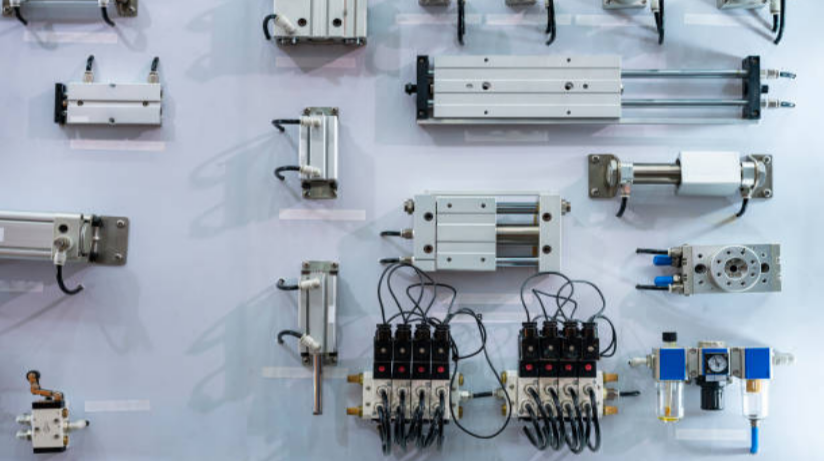
Mini Pneumatic Cylinders in High-Speed Automation: Small Size, Big Impact
Modern factories are shrinking equipment to keep lines quick and flexible, and that trend doesn’t show any signs of slowing down. Tiny pick-and-place arms, fast-labeling heads, and dainty assembly rigs now demand actuators that barely take up room yet still snap to life in a heartbeat. A mini pneumatic cylinder meets that need almost perfectly-a little component that somehow delivers a huge boost to how fast things can move.
In the sections that follow, we will break down the inner workings of these small cylinders, list the main jobs they tackle, and point out why choosing the right automation parts supplier is half the battle in hitting production targets.
What Are Mini Pneumatic Cylinders?
A mini pneumatic cylinder is a linear push-pull gadget powered by compressed air and sized to slide into openings most actuators could only dream of. Bore diameters usually start at 6 mm and climb to about 25 mm, and buyers can pick single-acting setups that exhaust from one end or double-acting models that blow air from both sides.
Even though mini pneumatic cylinders look small, they still pack a surprisingly powerful punch for their size. Manufacturers lean on them in tight spaces that need quick movement but can only manage light loads.
You’ll spot these tiny pistons doing work in:
- Electronics assembly lines
- Pharmaceutical packaging stations
- Labs that handle delicate optics
- Sorting setups for screws and sensors
- Micro-machining shops and small-scale robots
A good automation parts supplier will give you ISO-rated, well-tested gear. Most mini cylinders come with easy stroke adjustments, built-in cushioning, and coatings that shrug off moisture and dust.
Why Speed and Compactness Matter in Modern Factories
Plants today are sliced up into lean, modular cells where every inch counts. Industry 4.0 isn’t just a buzzword-it’s a requirement that machines watch, tweak, and retool on the fly. Tiny cylinders help make that happen by:
- Slashing the space big actuators would hog
- Keeping mobile bots light enough to zip around
- Pushing product faster thanks to quicker strokes
- Tucking more gadgets into tighter layouts without jams
Think about a printer, a snack-wrapper, or a chip-tester that needs to move parts every few milliseconds. A mini pneumatic cylinder jumps in here, working with low inertia and lightning response so nothing gets left waiting.
Putting geared-up components together and sourcing them from a trusted automation parts supplier can give any shop a jump in both output and accuracy. A few quick swaps sometimes feel like the whole line got a tune-up.
Why Engineers Love Mini Pneumatic Cylinders
Mini pneumatic cylinders look like shrunken versions of their big cousins, but designers bake in traits that make them quick, light, and tough for tight spots.
Made to Move with Minimal Mass
Lightweight aluminum shells, plus some tough plastic options, let these cylinders bolt onto fast arms or roaming gantries without dragging energy bills along. Less weight also means less shake, so parts land exactly where they should.
Under-50-mm Strokes that Fit the Fast Lane
Engineers hunting for a 50-mm stroke-or shorter-usually stop looking once they find a mini cylinder. That short travel is just right for zippy indexing, pinch-clamp moves, and flicking small parts out of the way before the next cycle hits.
Easy-to-Place Mounting
Many of these actuators hide grooves or neat holes right on the body, so extra brackets disappear. Tossing a cylinder in at the last second stops feeling like a game of Tetris.
Cushioned Stops to Guard the Finish
High-cycle units often pack adjustable cushions inside, or screw-in snubbers on the end caps, to soften the blow when the piston quits. Less slam means parts-and shop morale-last a lot longer.
Thanks to those traits, the mini pneumatic cylinder usually shows up on the wish list whenever speed and small footprint team up to cause trouble.
Where Tiny Cylinders Pack a Big Punch
Small pneumatic cylinders may look modest, but they often rescue tight spots where no larger actuator can fit. Here are a few factory floor scenes that show their surprising reach.
Electronics and PCB Assembly
Circuit-board lines are cramped and cluttered. A mini cylinder can nudge a component into place, prep a joint for solder, or lightly load a fragile wafer-all without hogging precious real estate.
Food and Beverage Packaging
Think about a sprinting bottling run. A palm-sized cylinder snaps shut a seal, slides a carton over, and never stutters even when the whole conveyor inches forward.
Medical Device Manufacturing
Surgical-grade work demands perfection at micro scale. Tiny actuators stack, inspect, or handle the fleeting plastic and metal bits inside insulin pens, inhalers, and dozens of other life-saving goods.
Laboratory Automation
On the lab bench, jitter-free motion is everything. Mini cylinders lift slides, swap vials, and shuttle test tubes without rattling the neighboring microscope or spectrometer.
Manufacturers who pick the right automation parts supplier lock in high-speed reliability and safety, so every batch of minis arrives ready to perform in its own tight race.
Read Also: Lipo Laser vs. EMSculpt: Which One is More Effective in Body Sculpting and Fat Reduction?
Picking the Perfect Automation Parts Supplier for Mini Cylinders
Choosing the right partner for mini-cylinder parts can make or break an entire project. You can’t cheat reliability when everything is literally stacked on top of the cylinder.
Before signing a purchase order, double-check these must-haves:
- Dimensional accuracy so the new cylinder bolts right in without extra machining.
- Material compliance whether food grade, rust-proof, or heat-tolerant.
- Global standards like ISO markings or NFPA codes.
- Complete documentation: easy-to-read CAD files, concise datasheets, and honest performance curves.
- After-sales service ready to answer a late-night tech question or help with maintenance.
Another angle is matching the cylinders guts to the system’s heartbeat. Look at operating pressure, cycle rates, and the punch the hardware needs to handle.
That alignment is where an expert automation parts supplier shines, simplifying integration and leaving room for future growth.
Many trusted vendors go a step further, offering custom stroke lengths, custom bores, or even pre-mounted sensors. Those extras are gold in today’s data-hungry smart factories.
Conclusion
Mini pneumatic cylinders are the unsung heroes of fast, nimble automation lines. They might be compact, but the boost they give to speed, flexibility, and overall system smarts is anything but small.
B2B manufacturers, system integrators, and automation pros know that the parts they pick can either turbo-charge a project or drag it down. Going with a solid automation parts supplier means you get gear that meets standards, lines up with compliance rules, and comes with engineering backup when the line starts flying.
Mini cylinders drive home a simple truth: in the world of automation, small sometimes wins. Whether you’re handling clean-room electronics or a line of pick-and-place bots, those compact rams get the job done without weighing everything down.



